Fall is the prime time for planting garlic. If your ground is still workable, you can still plant garlic for harvesting early next summer. All you need are fresh heads of garlic.
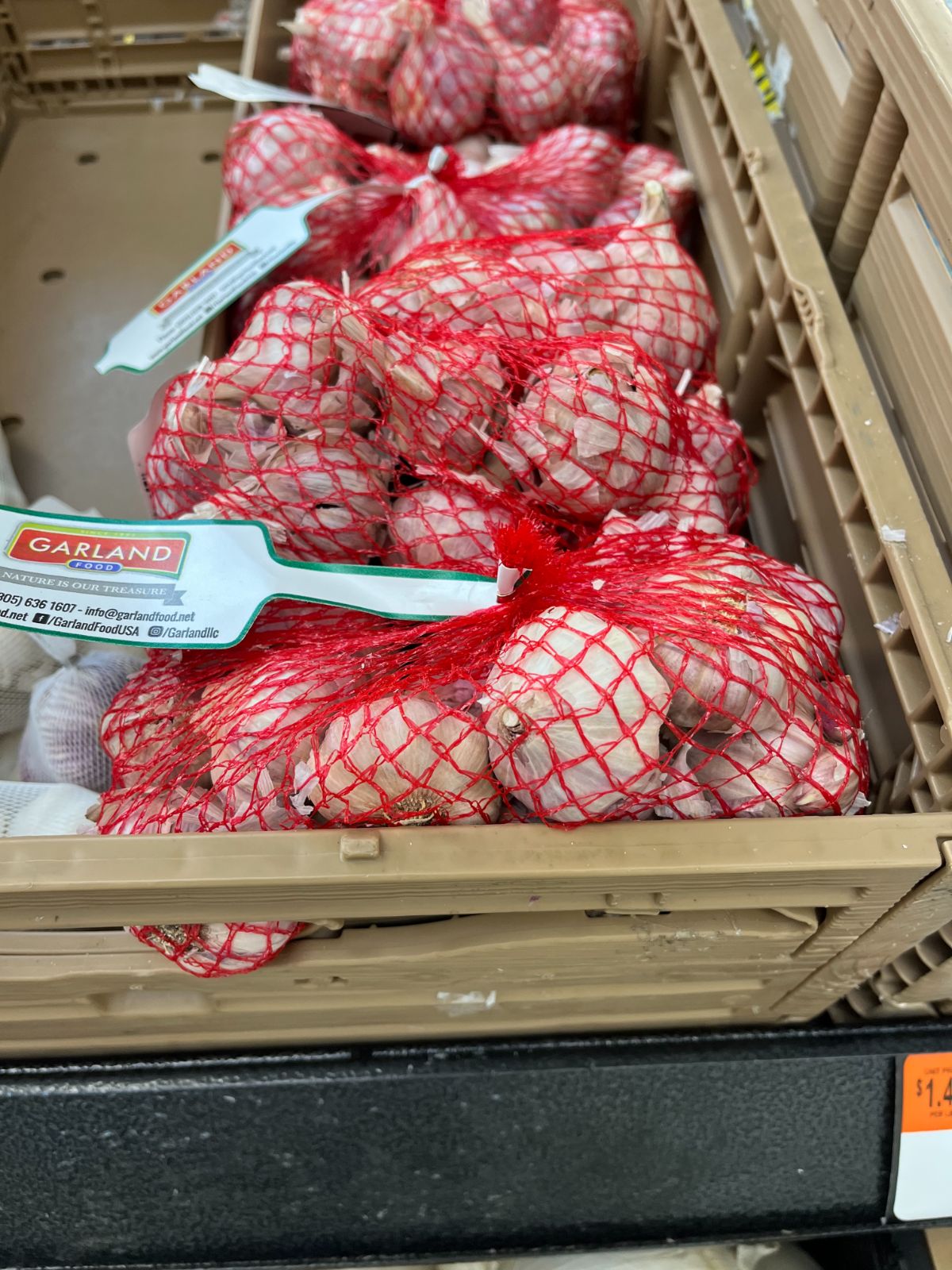
Garlic grows from the cloves of garlic bulbs (what some people call garlic heads or heads of garlic). To grow garlic, you separate the cloves from the head into single cloves. Each clove will grow into a new bulb of garlic if the clove is in good enough condition and if it’s in the ground long enough (which means fall planting so it overwinters and becomes cold stratified).
The grocery store has garlic, right? You may have bought it plenty of times for cooking and eating. So, can you just plant that?
Jump to:
- Can you grow garlic from grocery store garlic?
- Problems with growing grocery store garlic
- Important tips for planting grocery store garlic
- A better local buying alternative for planting garlic
- Perhaps an even better idea for buying garlic to plant
- But wait—do you have a seed garlic supply in your pantry or basement?
- Your time and effort are worth growing good seed garlic
Can you grow garlic from grocery store garlic?

The short answer to this question is “yes.” Yes, you can grow garlic from the heads of garlic at the grocery store. Or rather, it’s more accurate to say, “Yes, you can try.”
A better question to ask would be, should you?
Should you try to grow garlic from the grocery store? Only if you understand that the results may not be that great. You may have a limited crop or no crop at all. You may get lucky and have a good crop, but it’s definitely more of a crapshoot when you grow grocery store garlic instead of using good seed garlic.
Problems with growing grocery store garlic
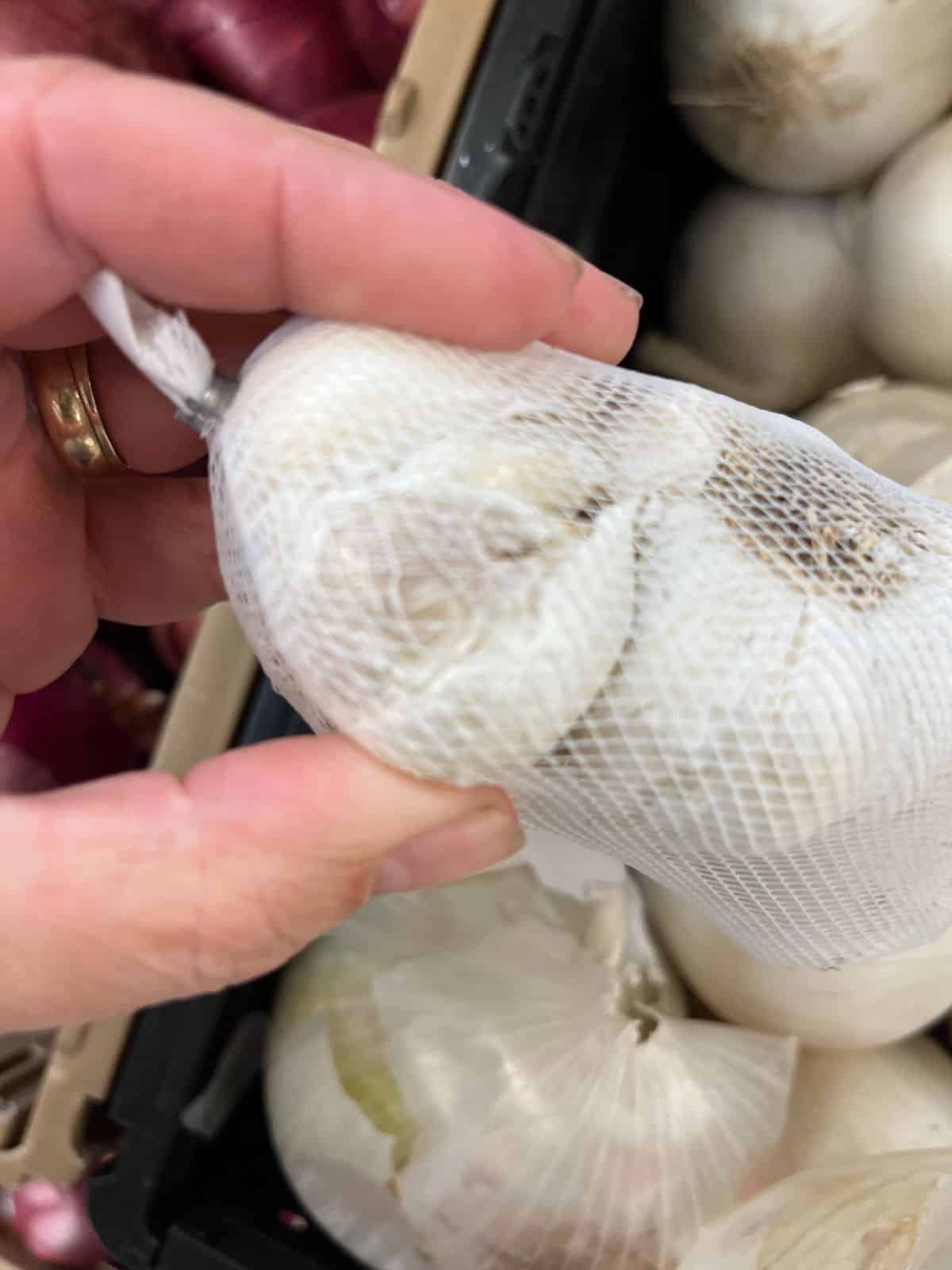
There are a few problems with growing grocery store garlic:
- Age of bulbs. Garlic bulbs in the grocery store are usually pretty old. There’s no way of knowing just how old. It’s not unusual for them to be a year old or older.
- Unknown variety. There’s no way to know what variety the garlic in the grocery store is.
- Probably unlikely the variety is the right variety for your location. Not knowing what the variety in the grocery store means, you have no information about whether it’s recommended to grow in your location or if it can survive in your climate. Grocery store garlic is most likely to be a softneck variety that was grown in a warm place like California; a lot of it comes from China. Softneck varieties are best for warm climates. There are only a specific few that will grow in colder and more northerly locations.
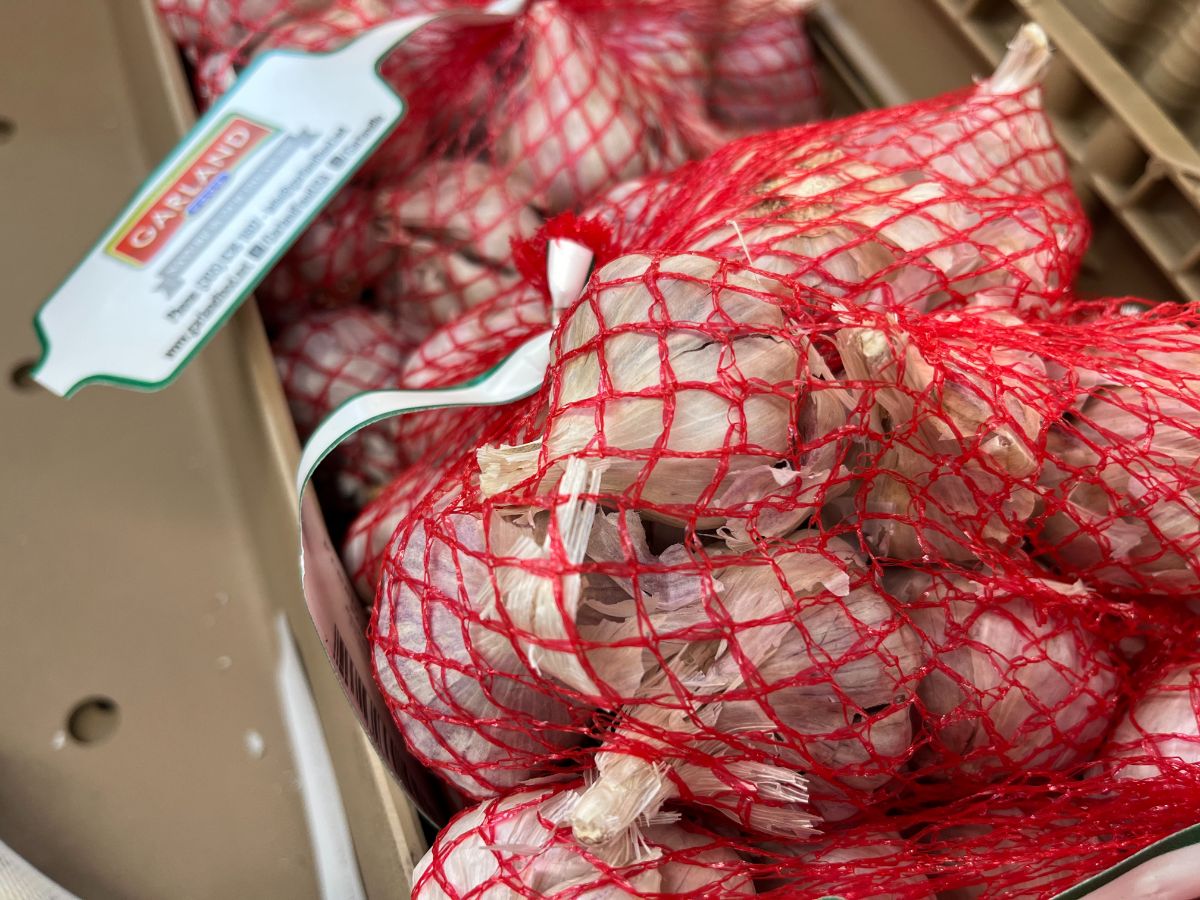
- Potential for disease and pest infection. Food inspections are different from seed inspections, and they depend on the state and country in which you live. If you are buying garlic that was intended for consumption, that doesn’t necessarily mean it was inspected according to the same criteria that garlic intended for planting is. If it came from out of the country (like China), who’s to know what their inspection process is at the local level? The concern here is that there may be fungal spores, pests like parasitic nematodes, insects, and diseases carried on those heads that you may be introducing into your garden. These are common in the places where a lot of grocery store garlic comes from.
- Likely treated against sprouting. Here’s one of the biggest reasons not to waste time and money growing grocery store garlic. A lot of it has been treated so that it can’t spout. It’s one of the reasons they can store it for so long before it’s sold. Garlic has to be able to sprout to grow. The cloves themselves are a sort of seed—a bulb that feeds the sprout and roots, but which disappears as the new roots and new plant use its nutrients. If it can’t sprout, it can’t grow.
- No information and no way to ask. There’s little to no information available for the garlic in the grocery store and no one to ask. You’ll be lucky if there is a label with the grower and point of origin. But be aware that even if a state or address or country of origin is listed, it could also just be a distributor, and so is not necessarily grower information or even really a point or country of origin (unless it expressly says it is—not that likely).
Important tips for planting grocery store garlic
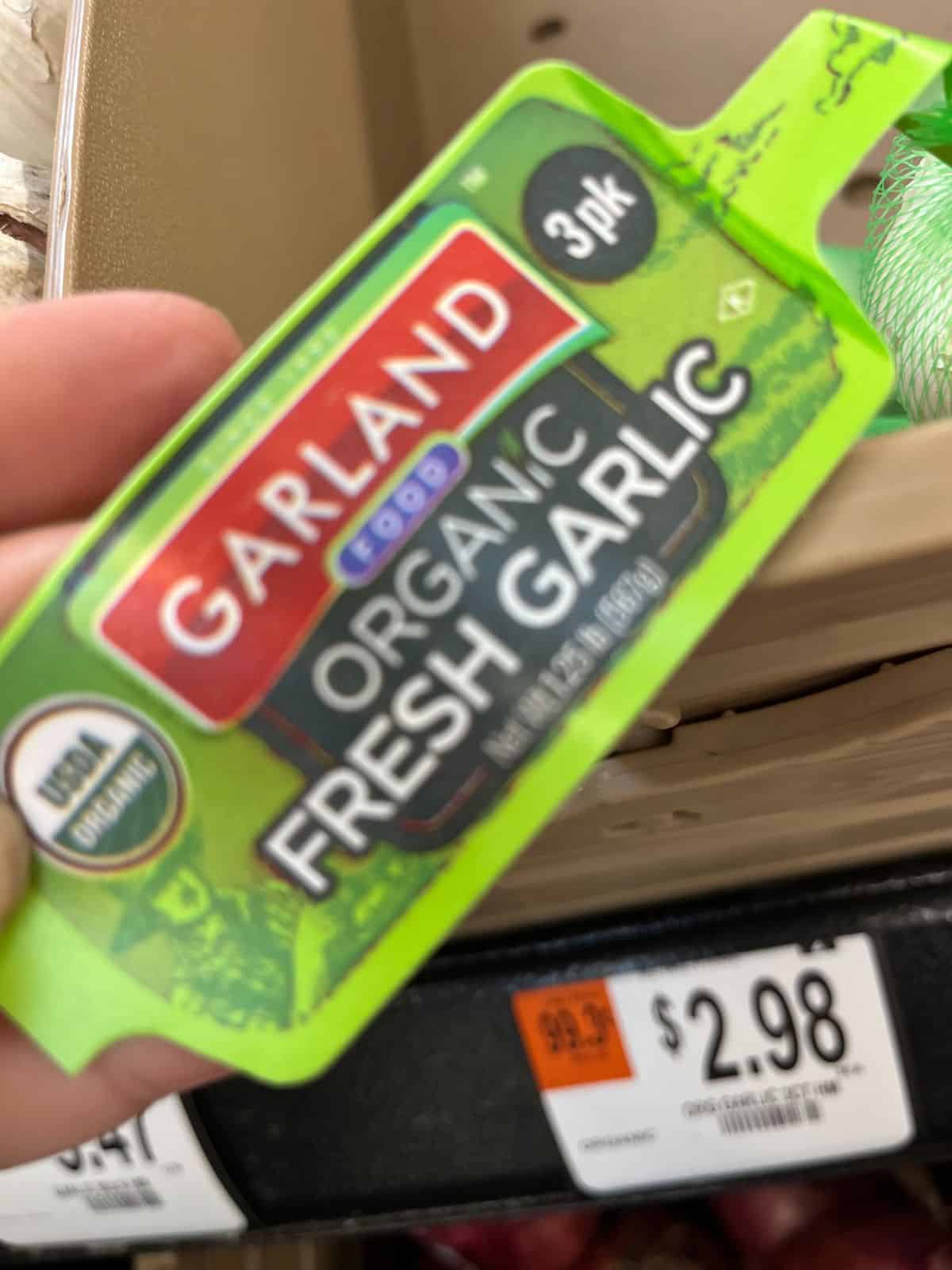
If you do decide to go ahead and plant garlic from the grocery store, you need to be picky about what you buy:
- Only buy organic garlic. Organic garlic *should not* be treated with chemicals to stop sprouting. This is your best bet that the garlic can actually grow.
- Pick through the heads and only buy firm heads with full wrappers (meaning the clove fills out the paper skin and isn’t hollow and can’t be pressed or broken, and the skin isn’t empty or dusty). Make sure the individual cloves—all of them—are present and firm. If there are missing cloves, they’re probably old, and they probably rotted or dried up from age. That means the rest of the head is just as old.
- Look for garlic that is from your country and as close to you as possible. If it’s local, it is at least more likely to be a variety that can grow where you do.
- Inspect the heads of garlic. Sniff them. They should smell mildly garlicy and fresh (not overpowering like the garlic is rotting or going by). There should be no signs of mold, rot, or blemishes. Avoid any heads that have dust falling off them—those could be dried up, rotted, old cloves in the head, or a seriously molding clove or head.
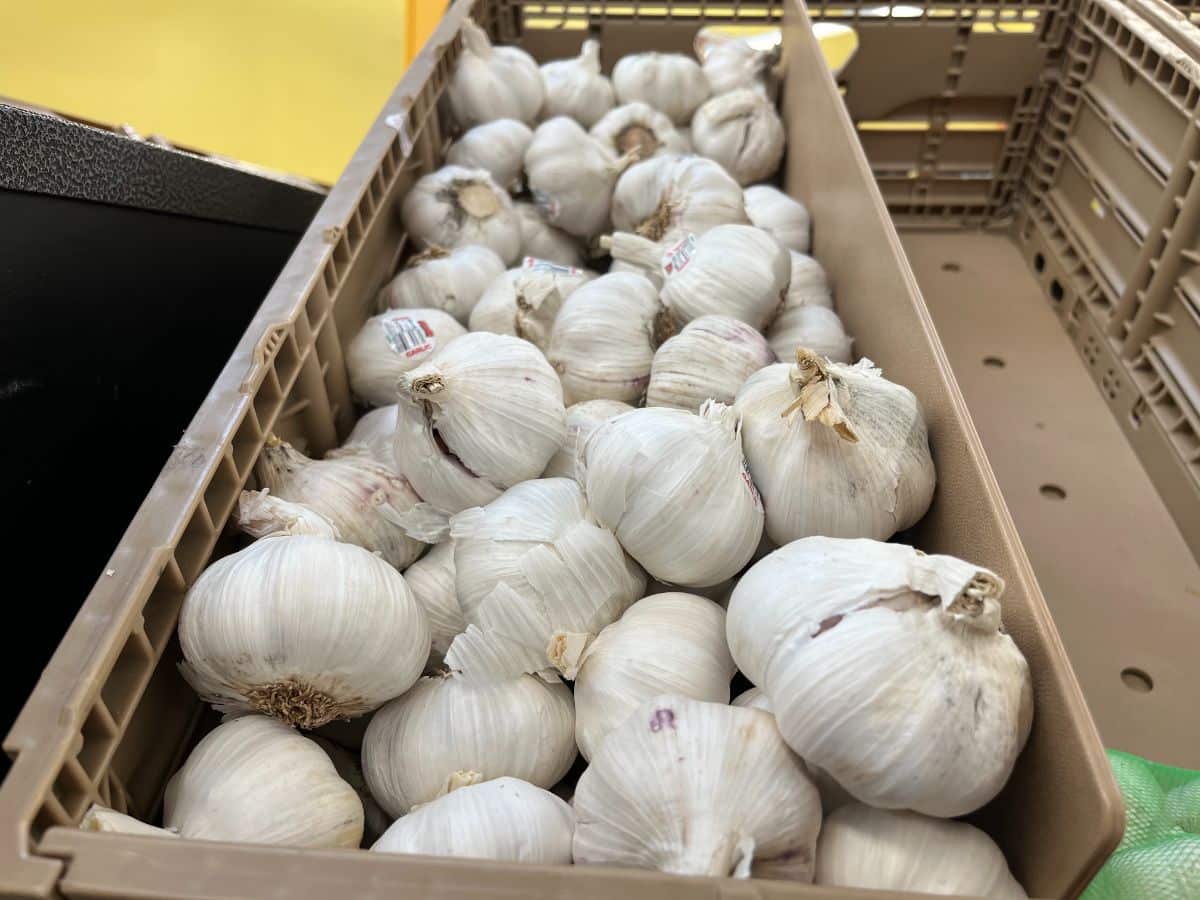
- Select and buy from a bulk, loose bin. Don’t buy the trapped-in-plastic boxed versions of garlic. These are almost always the oldest, driest, and least likely to grow, but more importantly, there’s no good way for you to inspect them to know one way or another.
- Sanitize the garlic before planting. To help deal with the issue of potential disease, pathogens, and pest infestation, soak your garlic cloves to sanitize them. Do this after they are separated from the head for planting. Soak for 10 to 15 minutes in pure hydrogen peroxide. This will kill molds and fungal disease spores on the surface and will kill parasitic nematodes if it comes into contact with them (but there is a chance of it not getting to all the nematodes in inner leaves or parts of the clove, but it is good protection and prevention is key in controlling parasitic nematodes).
A better local buying alternative for planting garlic

A better option would be to go to a local farm stand or farmers’ market and buy your garlic there. If it’s grown locally, you can bet it’s a good variety that will grow and produce in your area and one that is well suited to your local area. As long as it was grown locally!
That is key—make sure the garlic they are selling was actually grown locally. If it wasn’t, it may only be marginally better than what is in the grocery store. Ask. If they don’t know or can’t or won’t answer, there’s a reason, and you should move along to find better, more reliable garlic.
You also still need to make sure the garlic wasn’t treated against sprouting. This is probably much less likely to happen with smaller growers, but it’s worth asking to make sure you’re not planting garlic that literally cannot grow.
Buying local, organic garlic is your best bet and should give you a quality product that is well suited to where you live and grow and has a high likelihood of success.
Perhaps an even better idea for buying garlic to plant
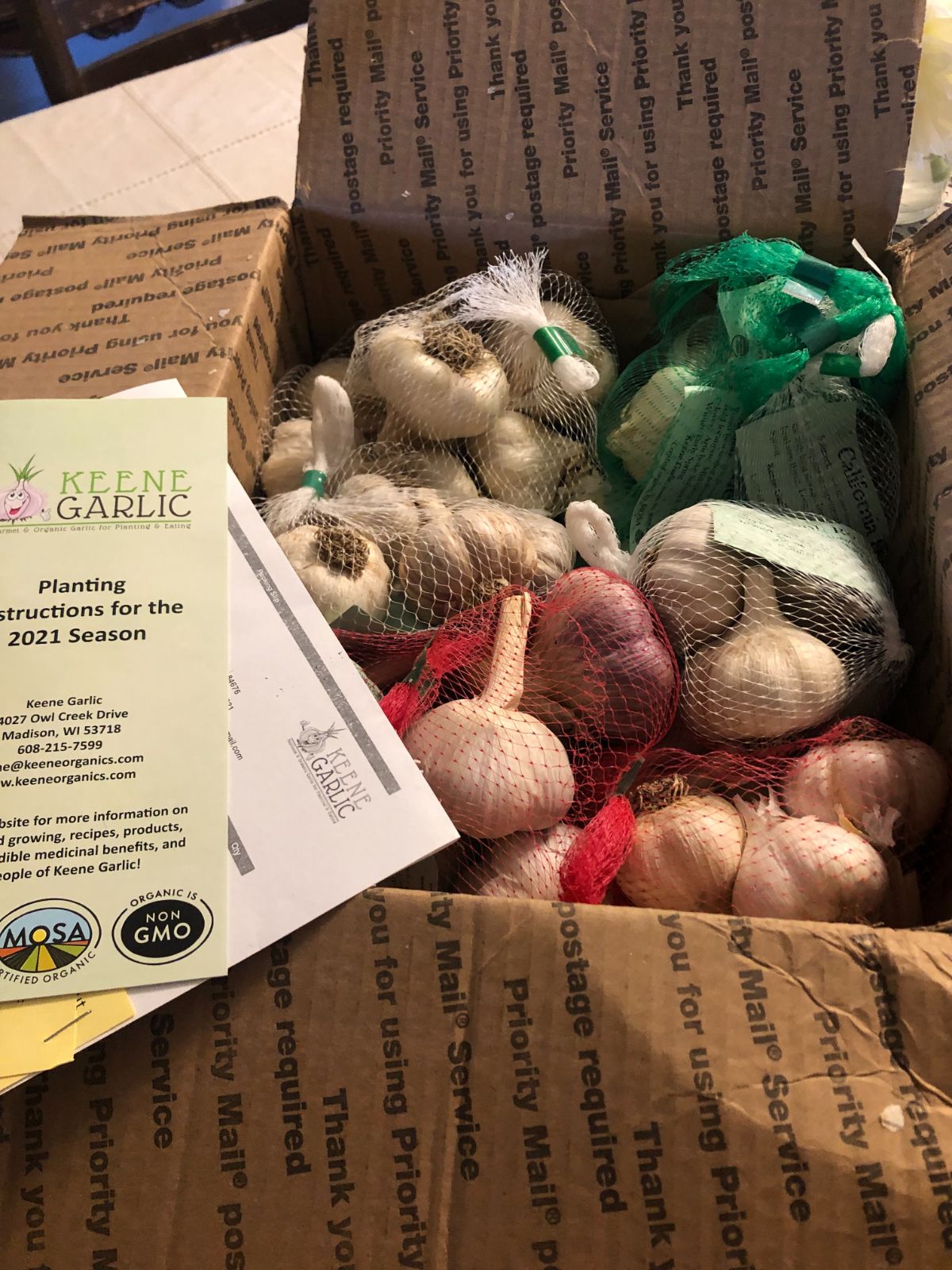
If you want as close to a guarantee of success when planting your garlic, buy new seed garlic from a reputable seed company or, better yet, directly from a trusted seed garlic supplier.
One advantage of buying directly from a seed garlic company is that they often have more available. They usually have more varieties available, too, and you should be able to easily find varieties that are recommended for your growing zone, climate, or location.
And perhaps the most important benefit of buying directly from a seed seller is that they would be an inspected and vetted seller that should have a license to sell seed (at least in the U.S.). If they say they are organically certified, that would also require a separate inspection by a third-party organic accreditation agency.
Beyond this, the better sellers will also do their own inspection and growing research and should be a good source of information, too. If you’re buying garlic to grow your own, a quality seed garlic seller is highly recommended.
But wait—do you have a seed garlic supply in your pantry or basement?
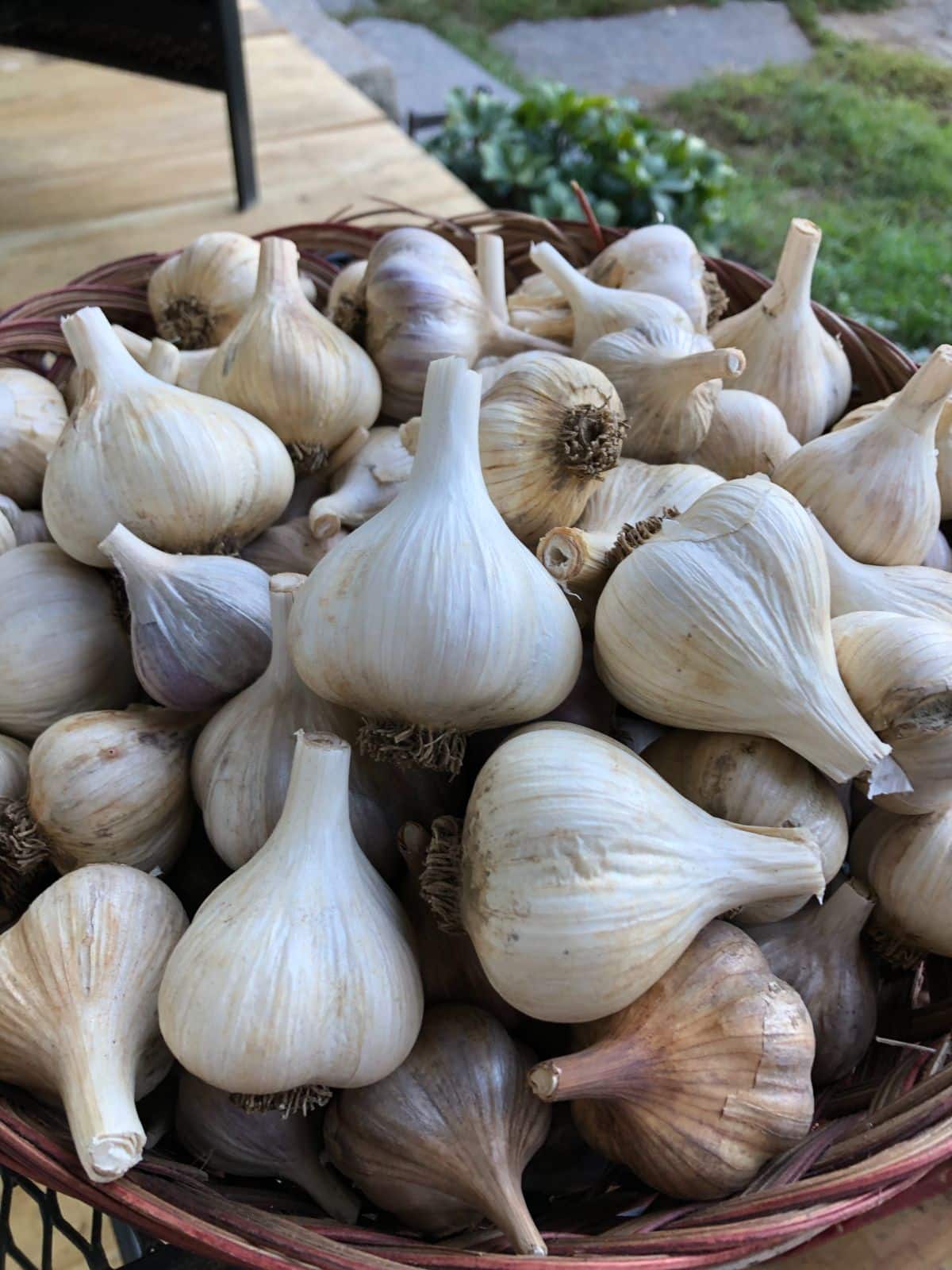
Now, if you’ve already grown garlic and you have a good supply set aside to store in your basement or pantry, you already have a good supply of locally grown seed garlic!
You know exactly how it was grown, where it came from if there were any issues with pests or diseases. You know if it performed well in your garden or not and whether it’s a variety worth growing again.
If it is, you can plant that! The only issue now is, do you have enough to spare for planting?
If you don’t feel like you have enough to spare to plant this year, a good way to go would be to buy new seed garlic from a reputable seller. Make it a variety or varieties that are suited to your location and climate. Invest in the best quality garlic you can get and buy extra. Plant enough for what you want for eating next year, and then plant enough extra to give you seed garlic for next year, too.
If you’re looking toward building up your own seed garlic supply, start with good stock. Known and reliable stock. That is not grocery store garlic, but a year from now it will be the best and cheapest seed garlic you could have for your garden.
Your time and effort are worth growing good seed garlic
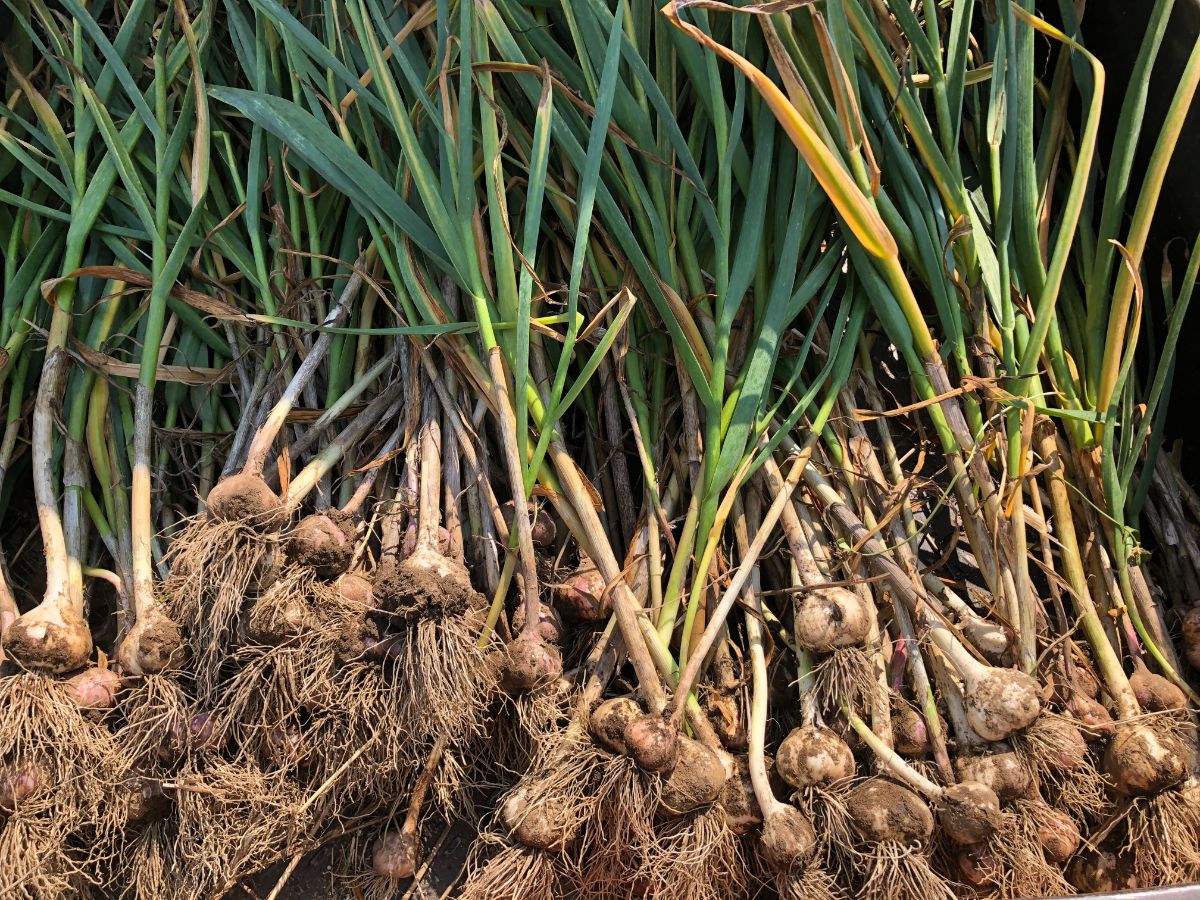
Growing your own garlic is a rewarding thing to do. It’s a process that requires some work and dedication, and the process is one that takes many months from the time of planting until harvest—about eight months, to be exact. That’s not a time you want to waste by planting poor garlic or garlic that can’t grow.
So, while yes, you can plant garlic from the grocery store, maybe you shouldn’t. At least know the risks you’re taking, and then consider if investing in something of higher quality and with a higher guarantee of success wouldn’t be a better use of your time and effort.
Once you’ve decided where to source your seed garlic from, you’ll want to know all about planting it (and growing, harvesting, and curing). Find our complete growing guide to growing garlic here.



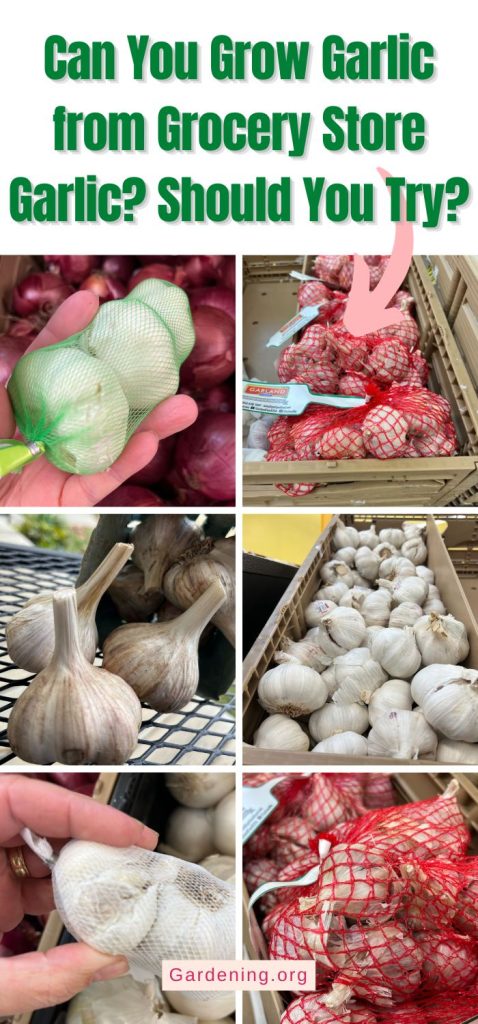
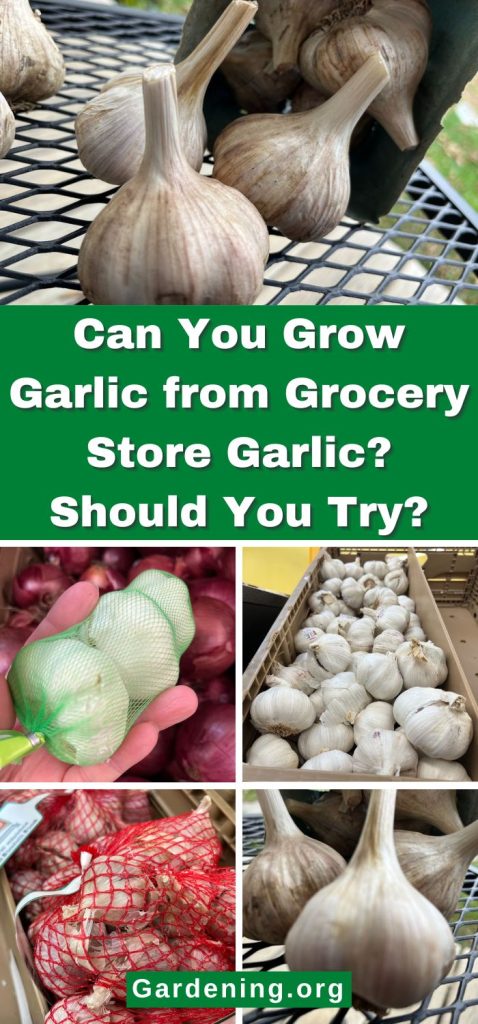


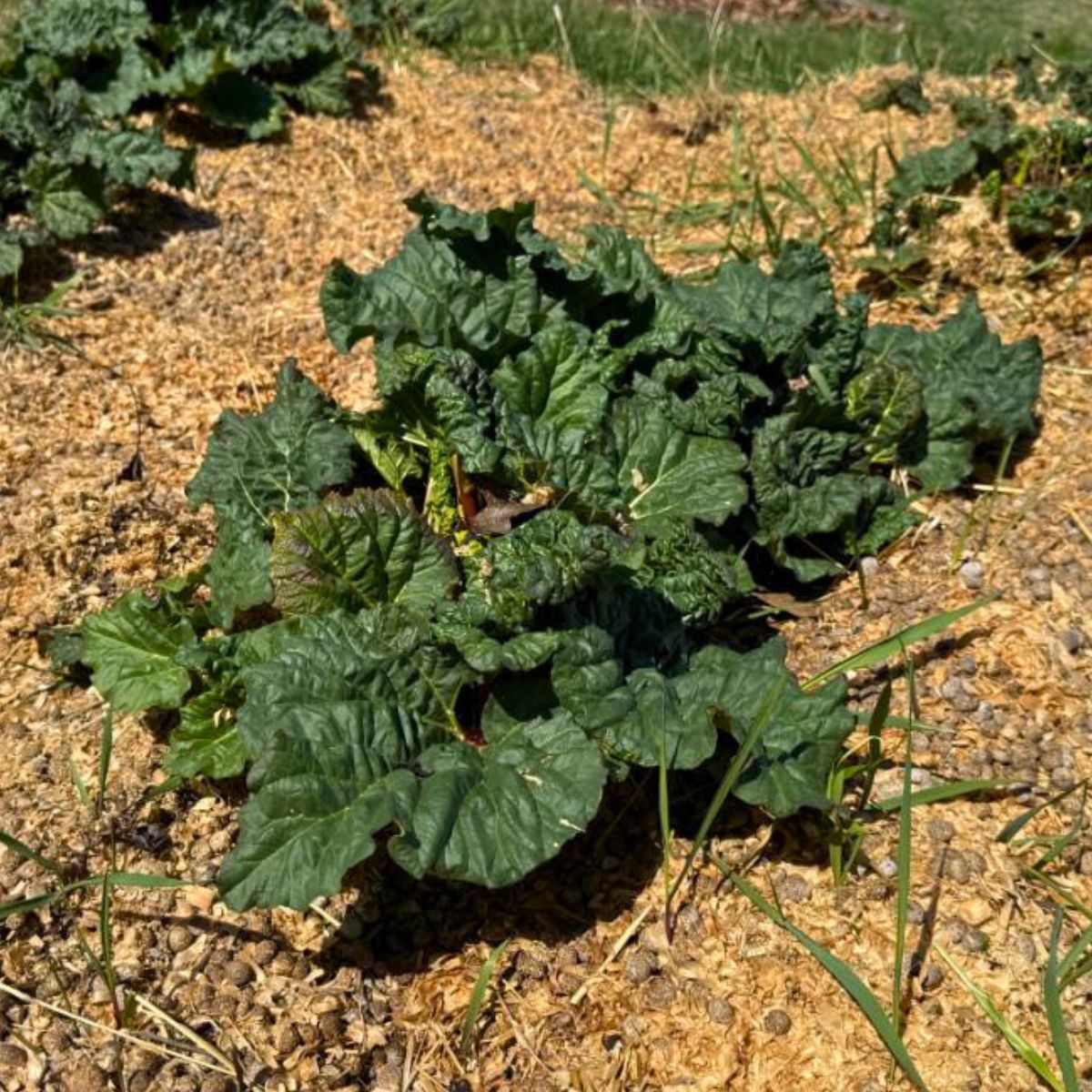

Leave a Reply